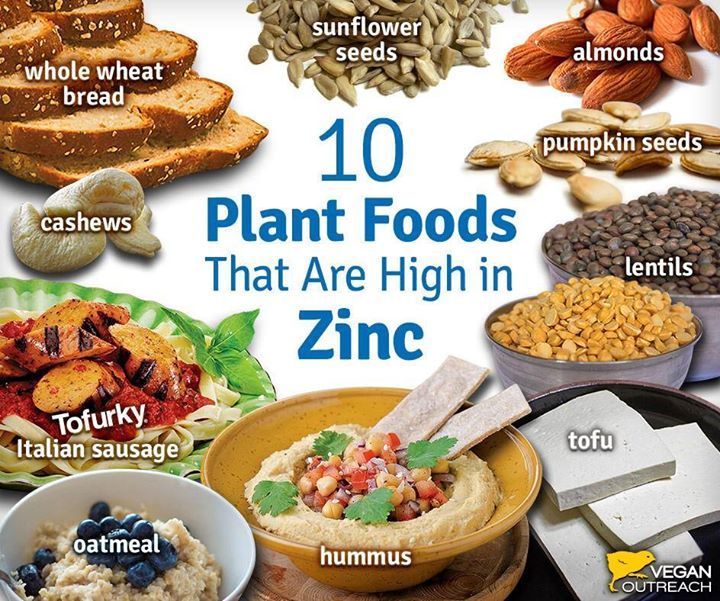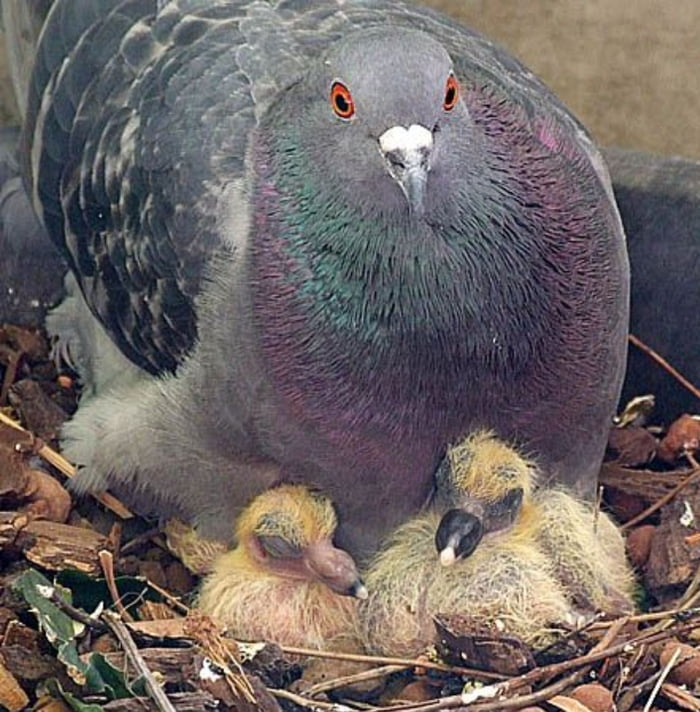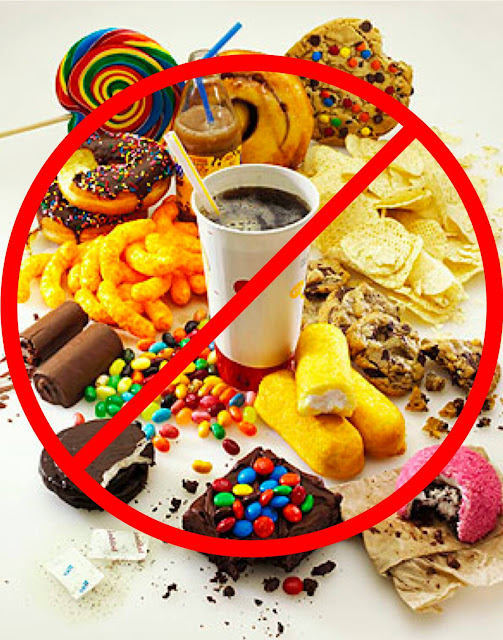Foods high in zinc for babies
Zinc Rich Foods for Babies and Toddlers, Foods High in Zinc for Kids, Zinc Benefits for Child Growth
Zinc-rich foods like legumes, seeds, nuts, yogurt, whole grains and eggs can prevent vitamin deficiencies in kids. Here is a list of zinc-rich foods which you must include in your kid's diet
Did you know that breast milk contains a small amount of zinc? It helps the newborn build immunity. Zinc is essential for your child's overall development as it is required to produce proteins and DNA for the body, digest nutrients present in food, to re-grow and repair body tissues.
Sheela Krishnaswamy, leading diet, nutrition and wellness consultant from Bangalore says, "Zinc is important to maintain immunity and protect against infections. It is also an important part of many enzymes and plays a role in wound healing."
What is zinc?
You now know that zinc is critical to our physical and mental well-being, but what else do you know about this metal?
"Zinc is important to maintain immunity and protect against infections. It is also an important part of many enzymes and plays a role in wound healing."- Sheela Krishnaswamy, nutrition consultant
Zinc is a trace element that is found in cells throughout our body. It is a nutrient that is essential for a healthy immune system and smooth functioning of the brain. It also decreases the risk of certain diseases.
However, our body is not capable of producing zinc. So, we need to consume zinc-rich foods to supply our body with this essential element.
Sheela Krishnaswamy adds, "Zinc is easily available in common foods like sesame seeds, almonds, egg yolk, chana, poppy, cumin (jeera) and mustard seeds."
Benefits of zinc for your child
|
Recommended doses of Zinc for kids
Although zinc is essential for the proper functioning and growth of our body, it should only be consumed in the recommended doses.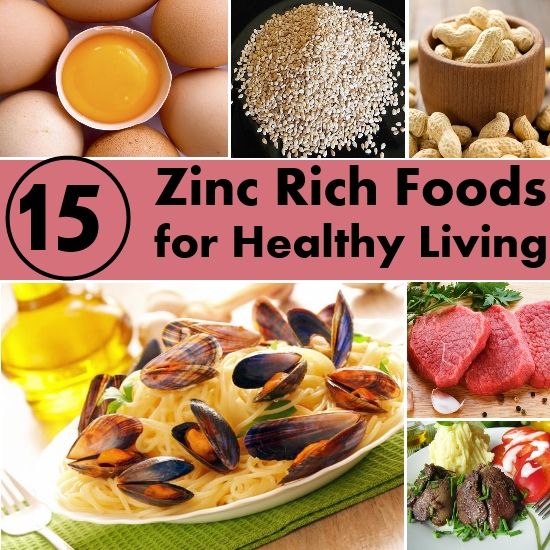
| Age-wise daily recommended allowance for Zinc |
| 0-6 months 7 months to 3 years 4-8 years 9-13 years 14-18 years | 2mg 3mg 5mg 8mg 11mg |
7 Zinc-rich foods for kids
Since our bodies cannot store zinc, we have to include zinc-rich foods in our child's daily diet. Here is a list of 7 zinc-rich foods for kids:
1. Seeds: Most seeds are a rich source of zinc; however, some are more than others. Seeds like sesame, hemp, mustard, pumpkin and chia seeds have an ample amount of zinc. Seeds are an excellent addition to your child's diet as they contain fiber, good fats, essential vitamins and minerals.
2. Whole grains: Your child can get his share of zinc from whole grains like wheat, oats and rice. However, keep in mind that grains contain an anti-nutrient called phytate, which reduces the absorption of zinc by the body.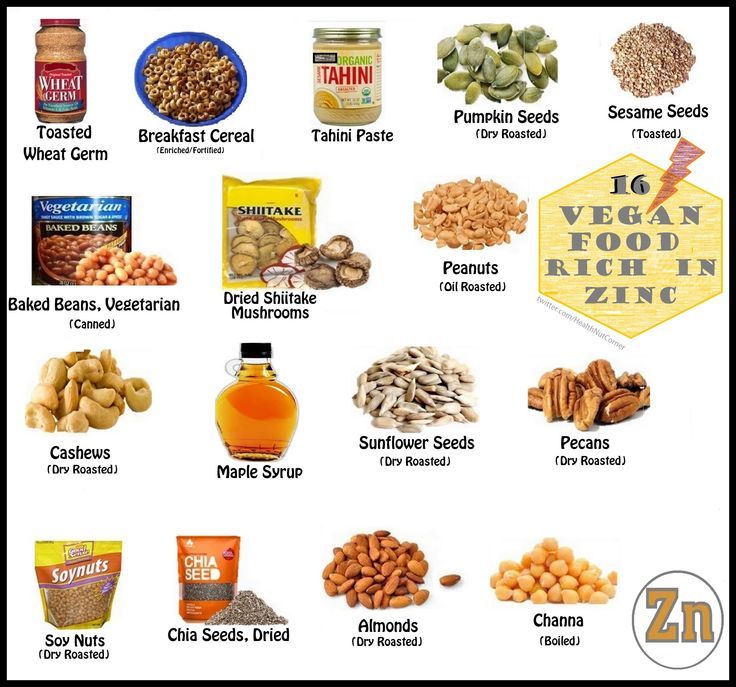 Whole grains are still preferred as it provides other important nutrients like fiber, B vitamins, magnesium, iron, phosphorus, manganese and selenium. A diet rich in whole grains is beneficial for your child too.
Whole grains are still preferred as it provides other important nutrients like fiber, B vitamins, magnesium, iron, phosphorus, manganese and selenium. A diet rich in whole grains is beneficial for your child too.
3. Meat: All meats have generous amounts of zinc. Go for skinless poultry or lean cuts of meat with fewer fats to get your quota of zinc.
Do you know that most dairy products like low-fat milk and yogurt pack a good amount of zinc too? 4. Low-fat milk and yoghurt: We all know that dairy products have plenty of calcium. But do you know that most dairy products like low-fat milk and yoghurt pack a good amount of zinc too? Daily intake of milk or yoghurt can fulfill your child's requirement for zinc. All you need to have is a cup of low-fat plain yoghurt — it has 2.2mg of zinc.
5. Legumes: If your child is zinc-deficient, give him boiled chickpeas as snacks. All kinds of legumes, lentils, and beans have an abundant amount of zinc.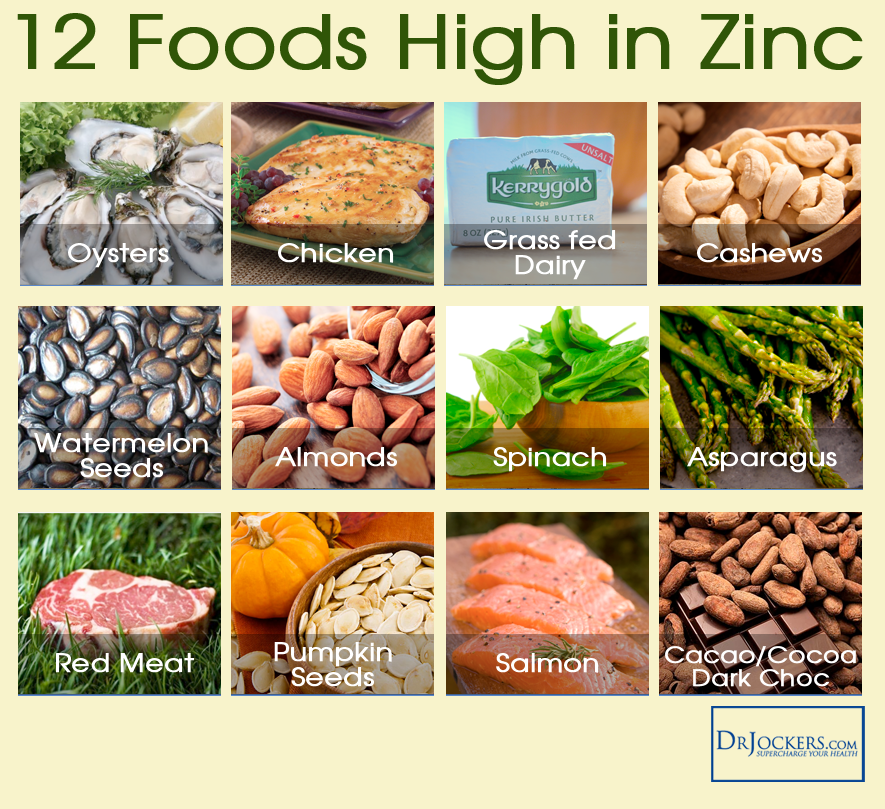 However, absorption of the zinc found in legumes is less, because of the presence of the anti-nutrient, phytates.
However, absorption of the zinc found in legumes is less, because of the presence of the anti-nutrient, phytates.
If your kids are vegetarian or following a vegan diet, legumes could still provide some amount of zinc. You can also include legumes in your family's diet for the high protein and fiber content.
6. Seafood: Oysters are the best choice for fulfilling your zinc requirements. A medium-sized oyster contains around 5.3mg of zinc. Lobsters and crabs also have a large amount of zinc.
7. Nuts: Nuts like almonds are an excellent source of zinc. Use roasted nuts like cashews, peanuts, walnuts as snacks for your hungry teenage children.
Are excessive amounts of zinc bad for your child?
Small amounts of zinc that you get from food do not harm your child. However, be careful if your child is having zinc from vitamin supplements. An excessive amount of zinc from supplements could cause diarrhoea, vomiting, abdominal cramps and headaches.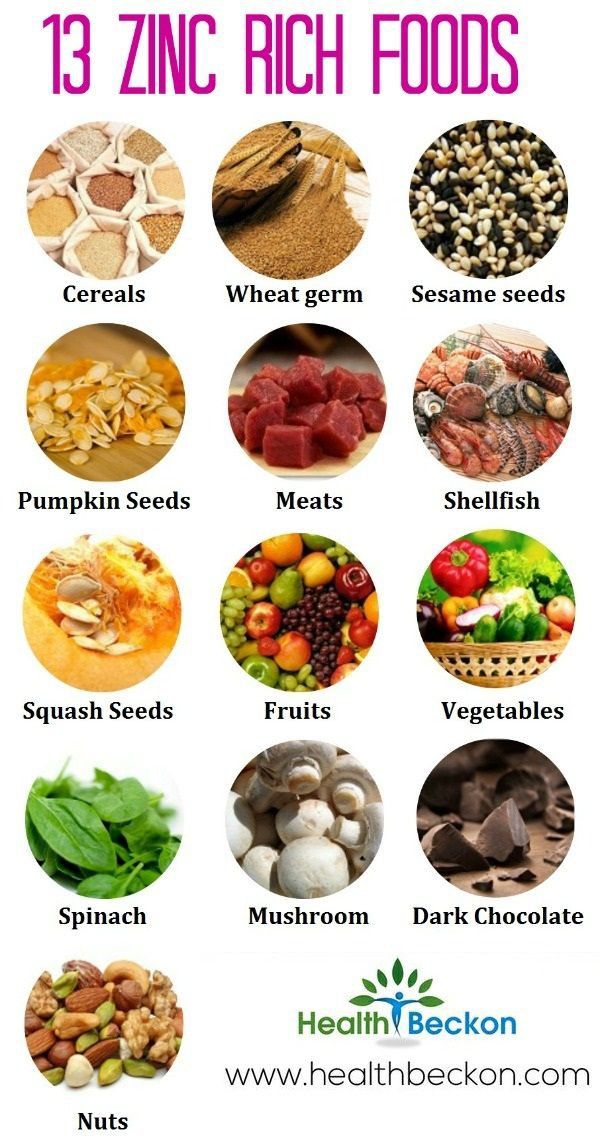 Long-term use of zinc supplements could lead to toxicity.
Long-term use of zinc supplements could lead to toxicity.
The amount of zinc your child need may be minimal but zinc deficiency could lead to many development issues. Zinc supplements are available in the market, however, it always good to get them from food sources for your child.
How To Ensure Your Baby Is Getting Enough Zinc
If you were asked to name all the nutrients your baby needs for healthy growth and development, the one you might forget to mention is zinc!
Whilst we’re all familiar with the importance of vitamins and minerals like vitamin C and iron, we don’t tend to hear as much about zinc – yet it’s an essential nutrient that has many important roles throughout the human body.
Please note: this information is meant as a guide and does not replace professional medical advice. Please speak to your doctor to discuss your baby’s particular requirements.
Why does my baby need zinc?
The body uses zinc for many functions essential to good health and growth.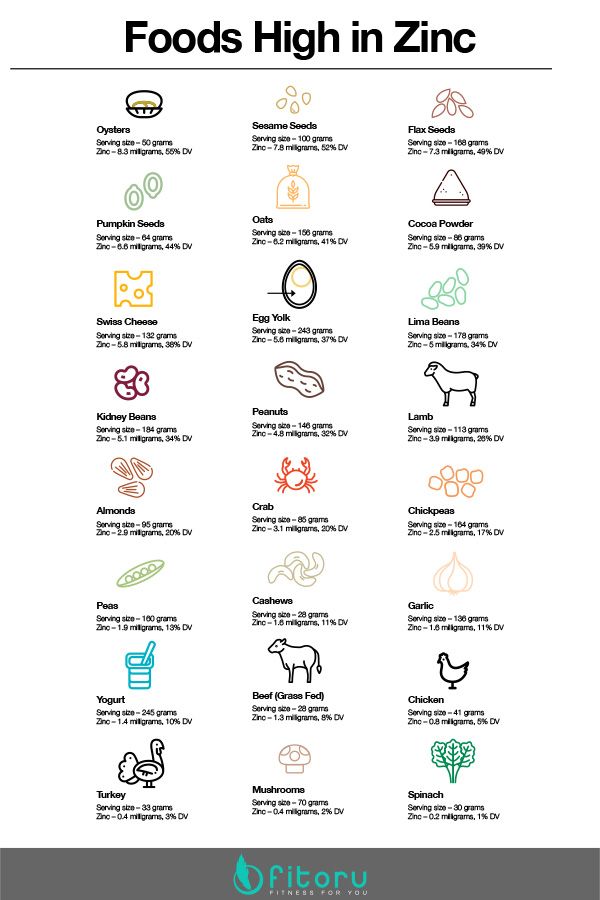 The problem is that the body doesn’t store significant amounts of zinc, so it needs to be regularly supplied by the diet.
The problem is that the body doesn’t store significant amounts of zinc, so it needs to be regularly supplied by the diet.
A diet rich in zinc…
- Supports your baby’s immune system and protects him from infection… including the common cold. With flu currently a concern for many parents, making sure our babies receive adequate zinc is a simple and natural way to boost their immunity.
- Helps your baby’s body quickly repair damage like cuts and scrapes.
- Keeps your little one’s skin healthy.
- Supports your baby’s growth and the development of his brain.
- Helps his body more easily absorb other nutrients from his diet.
Which are the best sources of zinc for my baby?
The best dietary sources of zinc tend to be the typical ‘protein’ foods. Red meats – particularly lamb, beef and liver – are very rich sources of zinc (you can read more about introducing meat to your baby here). The dark meat of chicken is another good source and is higher in zinc than the white meat.
The dark meat of chicken is another good source and is higher in zinc than the white meat.
If your baby is on a vegetarian diet, then it is important to make sure he receives zinc from other dietary sources, as those on a meat-free diet may be more likely to be deficient in zinc.
It’s also a good idea to note that you can boost the amount of zinc that your baby absorbs from these foods by serving them with a food rich in vitamin C (the easiest way to do this is by serving fruit with every meal).
Other sources of zinc include…
- wheat germ (a particularly rich source and one that’s easy to incorporate into your baby’s diet)
- whole wheat cereals
- other whole grains (check out our Baby Oatmeal section for more ideas). Please note that refined grains are stripped of the majority of their zinc content
- peas and beans
- lentils
- chickpeas/Garbanzo beans
- cheese
- yogurt
- yeast
- asparagus
You can also enhance the flavour AND the zinc content of your baby’s food by adding basil or thyme, both of which contain this valuable nutrient.
Do remember when preparing food for your baby that zinc – like many other nutrients – may be depleted by excessive cooking (particularly boiling). Keep cooking times to a minimum and make a point of steaming vegetables for your baby when possible or boiling in a VERY little water.
Sources:
Office of Dietary Supplements – Zinc
Zinc is essential for brain development and function
Lentils: a whole food for increased iron and zinc intake
Zinc in Vegetarian Diets
More baby nutrition articles…
Vitamin C
Protein
Calcium
Iron
Vitamin D
Top 10 Affordable Sources of an Important Micronutrient TEA.ru
Zinc is hardly one of the micronutrients you consider vital to your health. But its deficiency leads to the fact that rashes and inflammation appear on the skin, and a common cold drags on for weeks. We invite you to look at zinc from the other side and find out how to replenish its reserves without resorting to the services of doctors.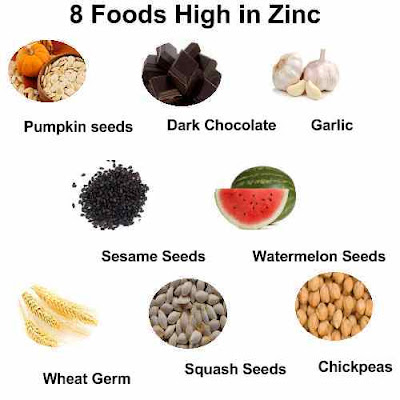
Cellular metabolism and assimilation of vitamins
Zinc works at the cellular level: it helps to activate antioxidants that enter the body from foods. So we get protection from harmful ultraviolet radiation and free radicals. If there is not enough zinc, we experience causeless fatigue and cannot perform even the simplest household activities, there is little energy, and sleep is also disturbed.
In short, zinc is needed for:
- digestion of proteins obtained from food,
- regeneration of skin cells (and normalization of sebum production),
- rapid removal of inflammation of the epidermis and mucous membranes, 9015 vitamins (9015 primarily E, A and D),
- synthesis of white blood cells, leukocytes,
- normalization of the lymphatic system and strengthening of immunity.
Which foods containing zinc should be in the diet constantly
Seafood (oysters, mussels)
But the situation with them is ambiguous: in our northern latitudes they are not so easy to find fresh, and they are not cheap.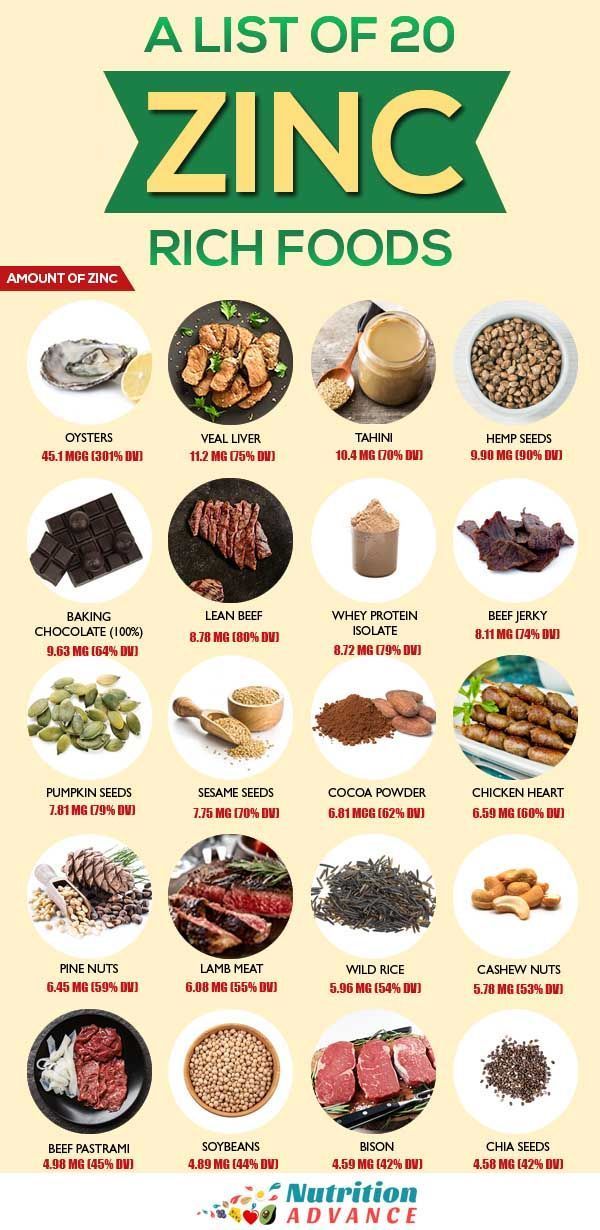 In addition, as a rule, no one is limited to one oyster, and getting an excess of zinc is also quite easy. Which is bad, because then the assimilation of other important microelements (copper and iron) and vitamin C becomes difficult. In addition to a large amount of zinc, bran contains amino acids, B vitamins and dietary fiber, which help the digestive tract.
In addition, as a rule, no one is limited to one oyster, and getting an excess of zinc is also quite easy. Which is bad, because then the assimilation of other important microelements (copper and iron) and vitamin C becomes difficult. In addition to a large amount of zinc, bran contains amino acids, B vitamins and dietary fiber, which help the digestive tract.
Peanuts (and paste)
Unsweetened peanut butter is the best choice for making sandwiches based on whole grain bread with bran (read more about its beneficial properties in our material). Just one such sandwich will give the body two-thirds of the daily dose of zinc!
Sesame and pumpkin seeds (and their oil)
To get the most benefit from the seeds, they should be eaten raw (sesame is also the absolute champion in calcium content, read more about it in our article). Add them to salads and cereals, smoothies and yogurts. Oil can be used as a dressing for ready-made dishes, but you should not fry on it in order to preserve all the beneficial properties.
Whole-grain cereals (oats, millet, buckwheat)
No wonder nutritionists and nutritionists around the world strongly advise children and adults to eat porridge for breakfast. A portion of porridge provides up to half of the daily dose of zinc, whole grains contain other vitamins and minerals, and there are not so many calories. Solid benefit for the figure, skin health and immunity!
Beans and chickpeas
It is strange that legumes have not yet been classified as superfoods, because they definitely deserve it. It is especially important to eat them daily for those who adhere to a vegetarian diet: in addition to zinc and other vitamins, they contain a lot of vegetable protein. Most importantly, do not forget to soak and cook them properly (read why this should be done).
Red Meat
Meat eaters will be pleased to know that one serving of freshly cooked red meat contains a daily dose of zinc (best grilled or stewed with minimal oil).
Cocoa powder and chocolate
A cup of fragrant cocoa or hot chocolate, gourmet mousse or brownie? The main thing is that the content of cocoa products is at least 75%, then such a dessert will be of real benefit. In addition to zinc, chocolate contains magnesium and iron.
In addition to zinc, chocolate contains magnesium and iron.
Chicken eggs
In addition to zinc, eggs contain eye-friendly gluten, as well as calcium and magnesium. Adults can safely eat up to two eggs a day, all the myths about bad cholesterol have already been debunked.
Coconut (butter and milk)
Coconut milk is a great alternative to regular cow's milk, it can be added to coffee and tea, exotic soups and desserts, fruit salads and cakes based on it. It is allowed to give it to children from an early age, since there is no allergy to this vegetable milk.
Which of these products is your favorite?
10 products for immunity, good vision and healthy skin
Zinc is an important trace element that affects both individual functions and the body as a whole. Zinc is involved in wound healing, the formation of DNA and hemoglobin. In this article, we will tell you why you need zinc, and which foods contain the most zinc.
Zinc and health - what you need to know
Zinc affects many vital functions of the body, namely the state of vision, immunity, skin health and much more. So, what and how does zinc affect?
- Vision
Vitamin A is essential for good vision, and zinc is essential for proper absorption of vitamin A. A diet rich in zinc improves night vision. In addition, zinc reduces the likelihood of age-related macular degeneration, which leads to vision loss.
- Cold resistance
Zinc affects the work of T-cells, as well as the self-reproduction of DNA, which directly affects the state of the immune system. Simply put, people who are deficient in zinc are more likely to get colds.
- Acne and sores
Like most vitamins and microelements, zinc affects not only the internal state, but also the external appearance. Zinc is essential for healing wounds and cuts.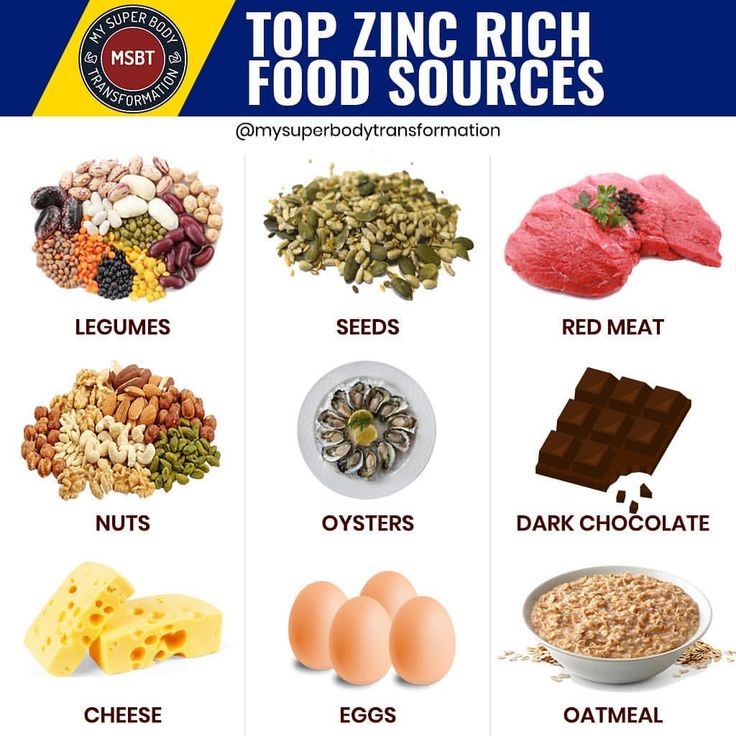 In addition, zinc supports the health of the digestive tract, which affects the condition of the skin.
In addition, zinc supports the health of the digestive tract, which affects the condition of the skin.
- Other
Zinc has been shown in separate studies to affect the health of the prostate gland and is essential for the prevention of prostate cancer. In addition, zinc affects male reproductive functions.
Zinc deficiency symptoms
Zinc deficiency symptoms include frequent colds, leaky gut syndrome, persistent diarrhea, poor eyesight, infertility, thinning hair, stunted growth in children, and slow wound healing.
The recommended daily allowance for zinc in the diet is 11 mg for men and 8 mg for women.
People who are at risk for zinc deficiency: vegetarians, pregnant women, people with digestive problems, people who abuse alcohol.
Top 10 Foods High in Zinc
1. Seafood
100 grams of cooked oysters contain 78.6 mg of zinc (more than 5 DV). Also, zinc is found in lobster and crab meat. Since these foods are very high in zinc, it is not recommended to eat them too often.
Also, zinc is found in lobster and crab meat. Since these foods are very high in zinc, it is not recommended to eat them too often.
2. Meat
If you like meat, you are less likely to be deficient in zinc than vegetarians. Most zinc is found in beef, lamb, pork, chicken and turkey. For example, 100 grams of beef contains 12.3 mg of zinc.
3. Wheatgrass
An excellent source of zinc for vegetarians is wheatgrass (100 grams contains 16.7 mg of zinc). If you don't know what to cook with wheatgrass, try adding it to salads.
4. Spinach
Spinach is a leading product in terms of vitamins and useful trace elements. It contains vitamins A, E, K, as well as calcium, iron, magnesium and potassium. 100 grams of spinach contains 0.8 mg of zinc.
5. Seeds
100 grams of pumpkin seeds contain 10.3 mg of zinc. In addition, zinc is found in sesame seeds, sunflower seeds, Spanish sage, and flax seeds.
6. Nuts
Nuts are also considered a good source of zinc. In particular, cashews have the most zinc at 5.6 mg per 100 grams. Other types of nuts that contain zinc include pine nuts, pecans, almonds, walnuts, peanuts, and hazelnuts.
7. Cocoa and chocolate
Cocoa and chocolate are not only tasty, but also healthy. 100 grams of cocoa powder contains 6.8 mg of zinc, while 100 grams of dark unsweetened chocolate contains 9.6 mg. It turns out that the habit of indulging yourself in chocolate brings health benefits! To learn how to cook cocoa, read our article "What is the use of hot cocoa with milk and how to cook it - 5 recipes."
8. Vegetables, legumes and mushrooms
Some vegetables and legumes are also sources of zinc. These are soybeans, peas, lima beans, green beans, Brussels sprouts and asparagus, chard, potatoes and pumpkin. Zinc is also contained in some types of mushrooms, such as morel, portobello (champignon variety), oyster mushroom, etc.